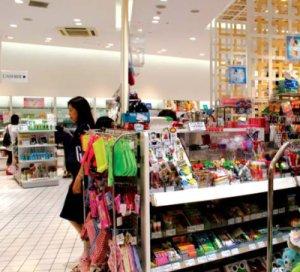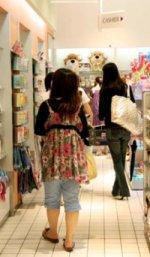Retail Focus: Sony Plaza
By Sarah Noorbakhsh
While the streets of Tokyo are well known as international hunting grounds for the next big trends, the eyes of Japan’s youth have for decades been, ironically, focused overseas, as teens and young adults peruse magazines featuring fashionistas "Sony Plaza is one of the surprisingly understated leaders in this foreign fetish movement"from Paris and New York while clutching mobile phones adorned with Mickey and Winnie the Pooh. And no matter how popular Harajuku Girls and anime may be abroad, Japanese lifestyles are littered with echoes of Europe and the Americas.
Sony Plaza is one of the surprisingly understated leaders in this foreign fetish movement, specializing in the import of miscellaneous goods, or zakka. The company was born into the world in 1966 as “Sony Plaza,” a small boutique in the basement of the Sony Building. Riding on the wave of Westernization, the original concept was one of an “American-style drugstore,” providing style-hungry Tokyoites with unique products not found domestically.  Sony Plaza clearly targets the female marketThe idea was a success and one store soon expanded into a chain bearing a distinctive logo of bold block letters, peddling snacks, stationery and knickknacks from dozens of countries.
Sony Plaza clearly targets the female marketThe idea was a success and one store soon expanded into a chain bearing a distinctive logo of bold block letters, peddling snacks, stationery and knickknacks from dozens of countries.
Plaza lays claim to the introduction of several huge trends in Japan, and the recent overwhelming success of the rubber clog brand Crocs can be attributed to their original appearance on the shelves of Plaza stores. Yet by far the biggest—yet least known—success story would perhaps be that of “city socks”: these colorful cotton slouch socks, popular in the 1980s went through a fashion evolution, eventually transforming into the ubiquitous “loose socks” universally associated with Japanese schoolgirls. Beanie Babies, Paddington Bear, Barbapapa and L.L. Bean are just a few other brands and characters that have enjoyed basking in Sony Plaza’s spotlight.

In 2006 the company announced its independence from Sony through a MEBO (Management and Employee Buyout), renaming itself as “Plazastyle” and rebranding products and stores under the simple name of “Plaza.” Even after its image defining name change however, the chain is still known affectionately as ‘Soni Pura.’ Plaza is easily maintaining its popularity post-buyout, and as of 2007, boasted over ¥43.2 billion in sales and ¥1.5 billion in profits. There are currently 70 full-sized stores domestically as well as three in Taiwan, and 44 Mini-Plazas dotted around station concourses and office buildings nationwide.
As of 2000 the company has also changed its focus from marketing only imported and licensed goods to promoting its own brand targeting single 20-somethings. Plaza currently collects its products from a reported 300 overseas and 800 domestic locations. It’s also speculated that the company plans to expand from its Taiwan base, exporting Japonica to culture-hungry youth around the world. JI





